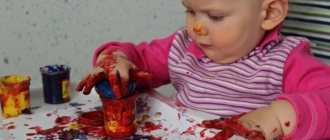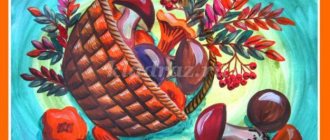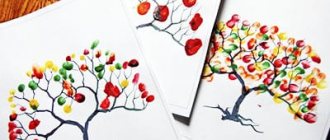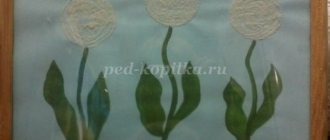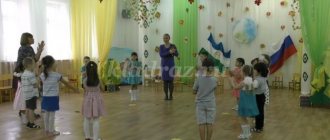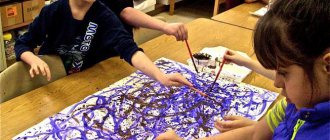Drawing with palms in the senior group: autumn still life. GCD summary, pictures for children, examples of children's work.
Palm painting is an unconventional painting technique that is commonly used with young children. But its capabilities are much wider. Today we will look at how you can use this non-traditional technique in teaching drawing to children of senior preschool age (senior and preparatory kindergarten groups).
Palm painting technique. You will need paints with the consistency of liquid sour cream. The paint is either applied to the child’s palm with a wide brush, or poured into a flat plate into which the child dips his palm. Next, palm prints are made on the paper and they are completed to the desired image. You can finish painting with your fingers or with a regular brush.
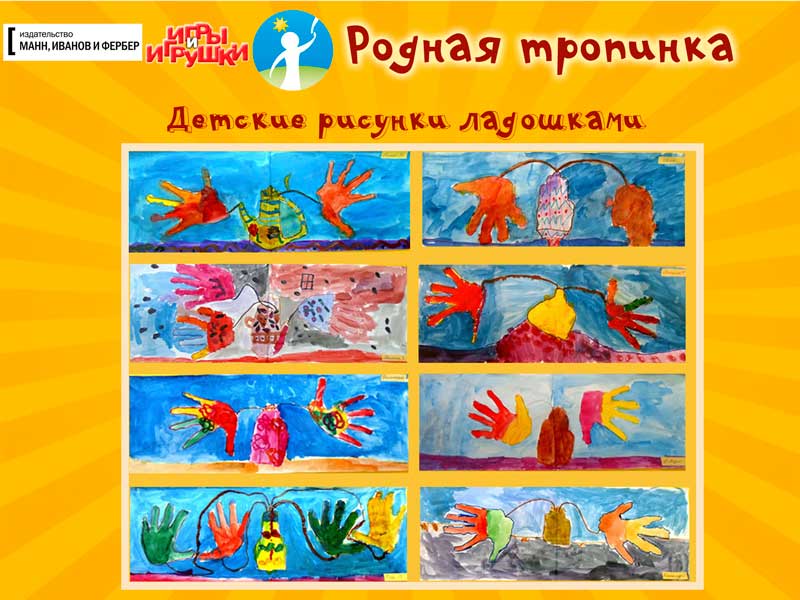
Author of the summary: reader of "Native Path" and participant in our competition "Autumn Workshop of Children's Crafts -2015" Lebedeva Elena Nikolaevna, teacher of additional education and teacher-organizer (Moscow GBOU School No. 324 "Firebird" DP kindergarten No. 215 and No. 179 ).
Tasks
— introduce the work of artists who depicted autumn still lifes,
- introduce the basics of color science, teach how to identify cold and warm colors and use shades in your works, introduce the term “saturated colors”,
- strengthen children’s ability to mix watercolor paints, obtain shades of colors and use them in drawings,
— develop children’s compositional skills: learn to place a composition on a non-standard sheet of paper, independently build a composition of a drawing and work it out in color,
— encourage children to boldly experiment, using a palette to mix colors, to find their own vision of the beauty of shapes and objects.
Materials and tools
All materials can be found in any store that sells office supplies. Children do not need professional expensive paints. It is better to choose those with a safe composition, because the child can taste them.
Required tools and materials:
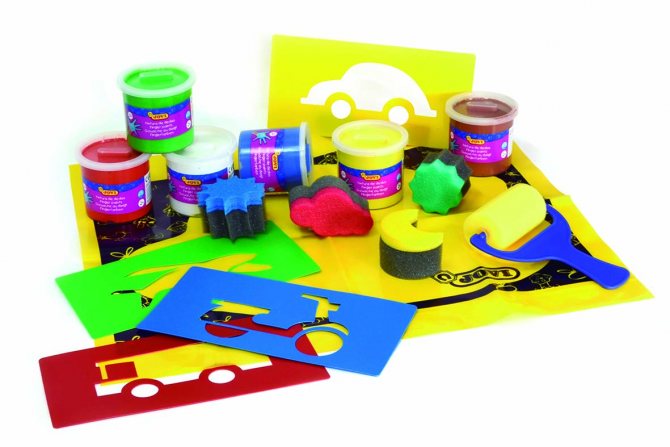
- paper;
- finger or any other paints;
- dry and wet wipes;
- cotton swabs and disks;
- old toothbrushes;
- oilcloth or mat for creativity.
You can choose any paper for drawing - A4 or A3 sheets, Whatman paper, coloring books, colored cardboard. You don’t have to buy expensive goods; just buy a standard album or sketchbook. But the paper in them should be thick so as not to get wet from water. Suitable paints include watercolor, gouache, and special materials for fingers. They can be purchased at any art stores. The colors should be bright; there are watercolors and gouache with glitter. Such materials will interest children. You can draw figures not only with your hands - the child can use cotton pads or sticks, toothbrushes.
It is advisable to seat the baby at a comfortable table, and lay a blanket or pillow on the chair to make him comfortable. It is better to cover the workplace with oilcloth or a special rug. In any case, the children will cover it with paints. It is also recommended to dress the child in old clothes that you don’t mind getting dirty. And to cleanse the skin you need to use dry or wet wipes.
Kids won't be able to draw serious pictures yet.
Their first attempts will resemble meaningless scribbles: dashes, sticks, crooked lines, blots. But the more often the child practices, the more interesting his images will become. With age, technique will improve, and the most talented children will begin to create real masterpieces.
Preparing to paint an autumn still life
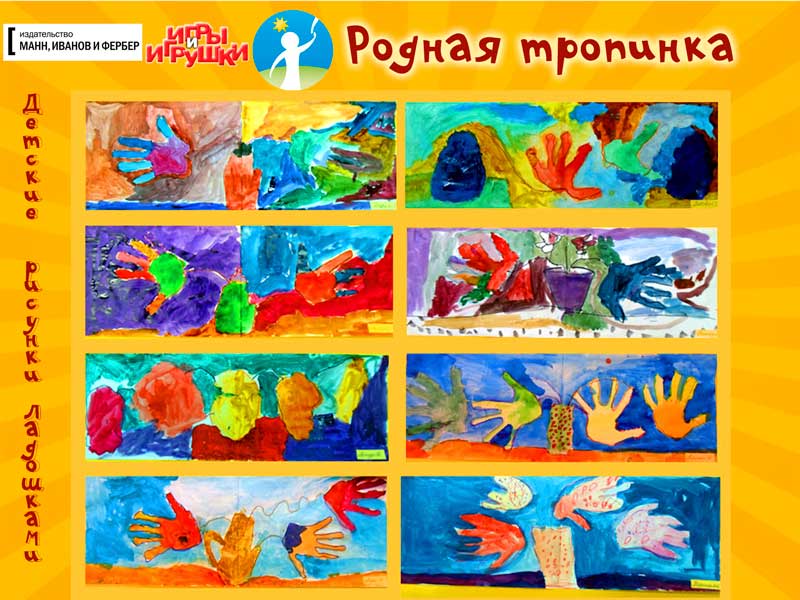
The teacher asks the children what time of year there are many bright and rich shades of warm colors in nature; nature literally breathes warmth. This time of year has always attracted artists, poets, and composers with its luxurious beauty; they admired this time of year and conveyed their admiration to people through their vision of the beauty of nature. How many famous people have left us their masterpieces in painting, poetry and music! What time of year do you think it might be? (autumn). What time of year is it now? What autumn months do you know?
What is the difference between early autumn and golden autumn? (In September, autumn is just beginning. The first yellow leaves appear on birches, maples bloom with yellow and red foliage. They say about such an autumn - early autumn. In October, all the trees dress up in autumn outfits, the leaves begin to fall. They say about such an autumn - golden, lush autumn ).
How do we know that late autumn has arrived? (In November, there is almost no foliage on the trees, there are frequent cold rains, frosts set in, and the first snow falls. This is called late autumn).
Autumn has its own colors. What colors of golden autumn do you know? (Red, yellow, orange, green, purple, warm, crimson, golden).
More useful materials for talking with children: A selection of poems about the colors of autumn for drawing classes with preschool children can be found here in the article about drawing an autumn forest using the technique of leaf prints on paper.
The teacher invites children to draw an autumn still life and shows how adult artists and children who are learning to be artists draw still lifes.
How to analyze these still lifes with children: The teacher shows the children a table with warm and cold colors and the still life invites them to think through what color palette the artist tells us about autumn in his still life. Does this painting have more warm or cool colors and shades?
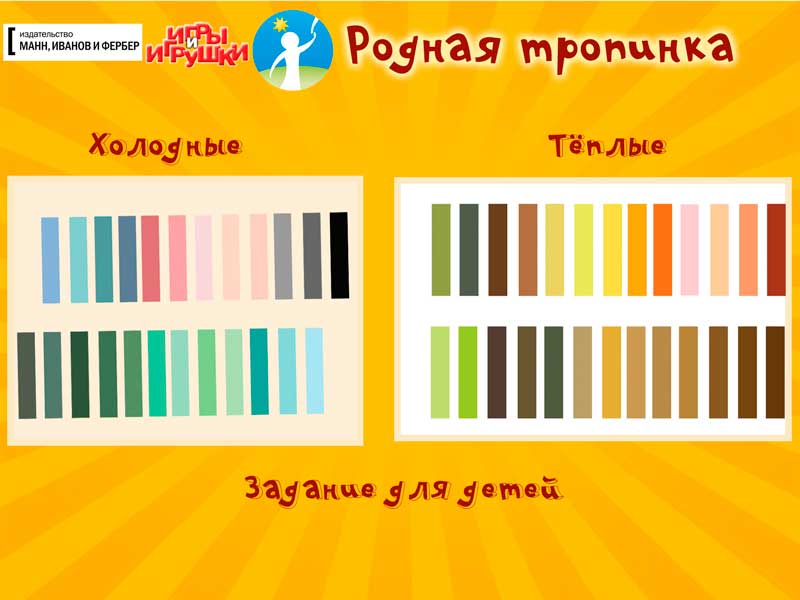
At the end of the conversation, the adult asks: “What colors will you use to tell your story about autumn in your future still life? Think about it, and you and I will begin to draw an unusual autumn still life.
The still life will consist of maple leaves that stand in a vase. We will draw maple leaves using our palms.”
When to start drawing
Already a six-month-old baby can begin to teach drawing with his palms. After all, it is from this age that children begin to sit, and they begin to learn more and more new things. This exercise helps develop motor skills.
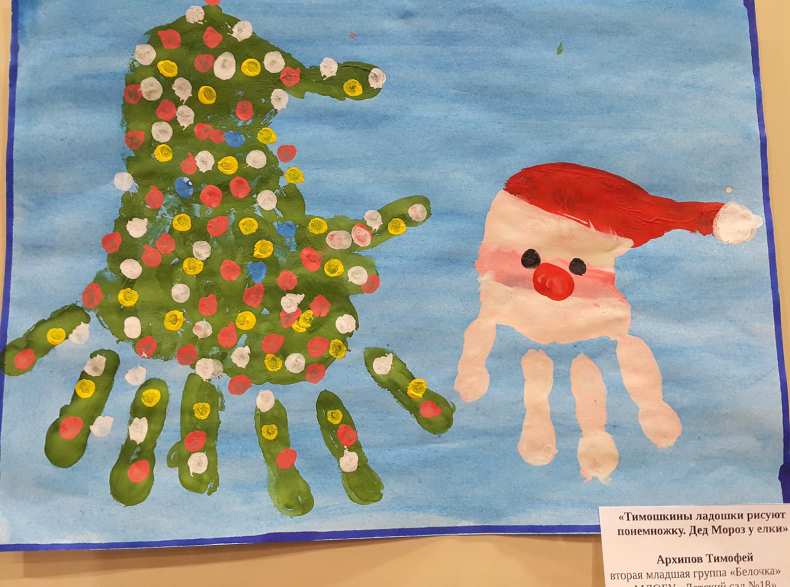
Secrets of drawing with palms
- To paint with your palms you need special paints. They do not harm babies. They taste so bitter that the children themselves will not want to try them anymore. It is necessary to ensure that the child does not put his hands in his mouth.
- If it is not possible to buy special paints, then regular gouache will do.
- It is better for small children to draw on the floor. You can lay regular oilcloth there so that everything around doesn’t get dirty.
- To ensure that the paper does not move out, it is constantly secured with tape.
- At first, they draw for five minutes a day. Then you can increase it to 30 minutes.
- A child should draw only if the child is in a good mood.
- Some parents only draw with their children in the bathroom. After all, if the baby gets dirty, it will be easier to wash him. Kids love to draw on the tiles in the bathroom.
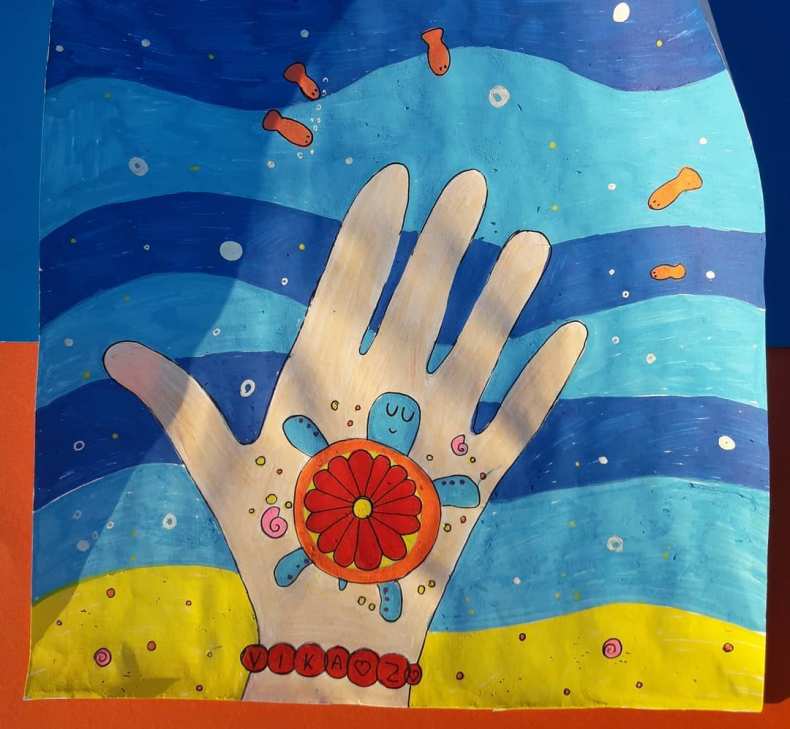
It is necessary to supervise the child while drawing. You can't leave him alone.
Features of finger paints
- Suitable for drawing with palms.
- Harmless. They have no toxic substances. Contains food coloring.
- It is better to add more salt to the paint so that the child no longer wants to put the paint in his mouth.
- Such paints can be easily washed off the skin.
- Paints are washed off from any clothing.
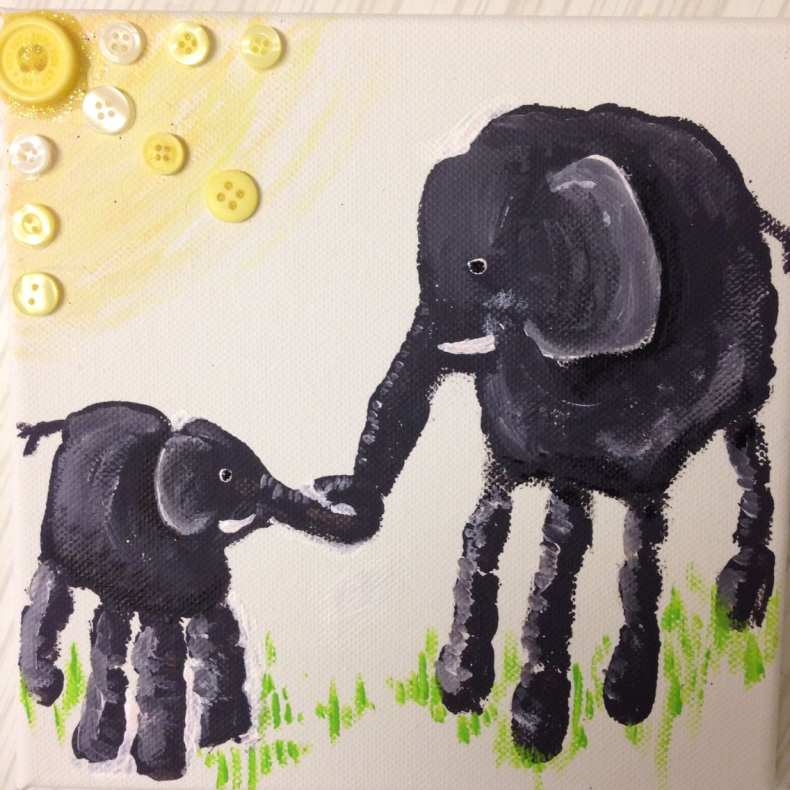
How to draw the sun with your palms
- You can draw the sun from the age of 12 months.
- For drawing, use a piece of blue paper or cardboard. After all, the color blue represents the sky.
- While drawing, the child sits on the lap of one of the parents.
- Then you need to draw a circle in the center of the sheet.
- The baby draws the rays of the sun with his palms.
- Mom or dad directs the child's palms in the right direction.
- You can also draw the eyes, nose and mouth of the sun.
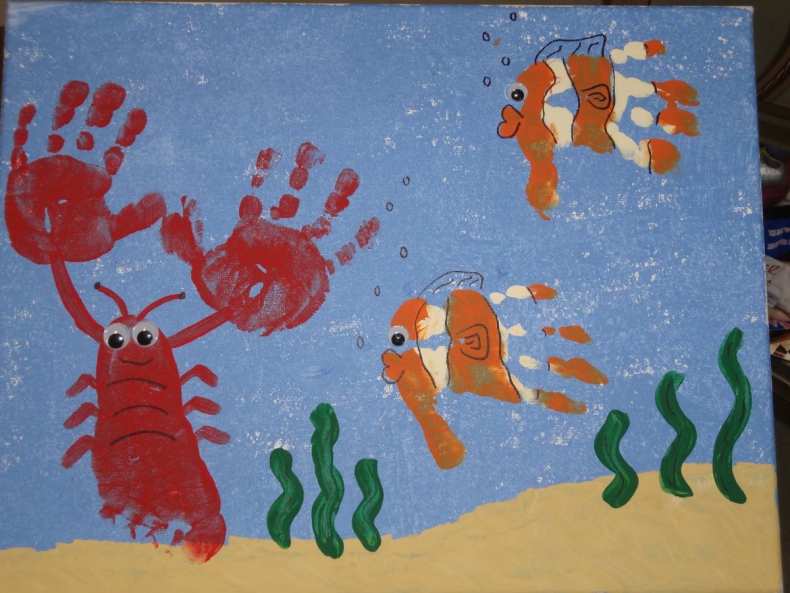
Progress of the lesson.
Organizational moment: children stand in a circle.
Educator: Guys, show your palms , stroke them, clap your hands , close your eyes with your palms , rub your cheeks with your palms . palms can do . also draw birds with your palms . (Children sit at tables.)
Educator: Guys, why did the birds fly away ?
Children: It’s getting cold, the birds have nothing to eat .
Educator: Well done, guys! Guess the riddles about what birds they are talking about!
He steals hemp. (sparrow)
Blue scarf, dark back.
Little bird , call her. (titmouse)
Children: These birds are wintering birds.
Educator: Well done! Let's draw a bird . Before drawing we must do finger exercises.
on your palm ,
Feeding the cute titmouse
The bird pecks the grains,
Sings songs to children:
I fly all day.
Educator: Look at my palm , it seems to me that it looks very much like a bird. And what do you think? Where is the bird's beak? Where's the neck? Show the body of the bird. What a wonderful fluffy tail. (The teacher shows on his palm , the children on theirs).
Paint Recipes
The technology called “Finger Painting” involves the use of paints. But many parents worry that they may be dangerous for the child. After all, many kids taste them, and they contain many harmful chemicals.
Some mothers prepare their own paints. The ingredients are quite simple:
- 2 tbsp. flour;
- 1.5 tbsp. water;
- 7 tbsp. l. salt;
- 1.5 tbsp. l. vegetable oil;
- glycerol;
- food colorings.
First you need to mix the dry products - flour and salt. Add water to them and stir until thick sour cream forms. Then add vegetable oil. The ingredients can be mixed with a whisk, fork, mixer or blender. Glycerin is added as desired, it gives the paint shine.
The finished mass is poured into different jars; you can use empty containers from gouache or baby puree. Then you need to add dyes. They can be natural - juice of carrots, beets, celery, turmeric. You can also use food colorings that are added to baked goods.
At home, you can prepare three-dimensional paints for finger painting. You will need few ingredients:
- 1 tbsp. flour;
- 1 tbsp. salt;
- 2 tbsp. water.
The products must be thoroughly mixed and placed in different containers. Then dyes are added to them. For additional shine, glitter or glycerin is added to the mixture. Next, the jars are placed in the microwave for 1.5 minutes at 180 degrees. The result will be a voluminous material. While drawing, the paints will lie on the paper so that any image will acquire a 3D effect.
You can also use porridge for cooking:
- 0.5 tbsp. fine-grained cereals;
- water;
- dyes.
Semolina is suitable for creating paints; it is quite small. It is cooked according to the usual recipe; the consistency of the porridge should resemble sour cream. For greater viscosity, you can add PVA glue to the mixture. The mass is also laid out in small jars and mixed with dyes. This material will also allow you to create three-dimensional drawings. But after applying it to paper, you need to handle the painting more carefully - it must dry. You can fix the cereal with regular hairspray.
